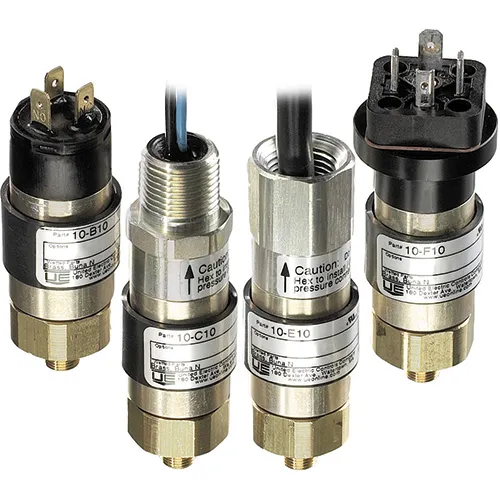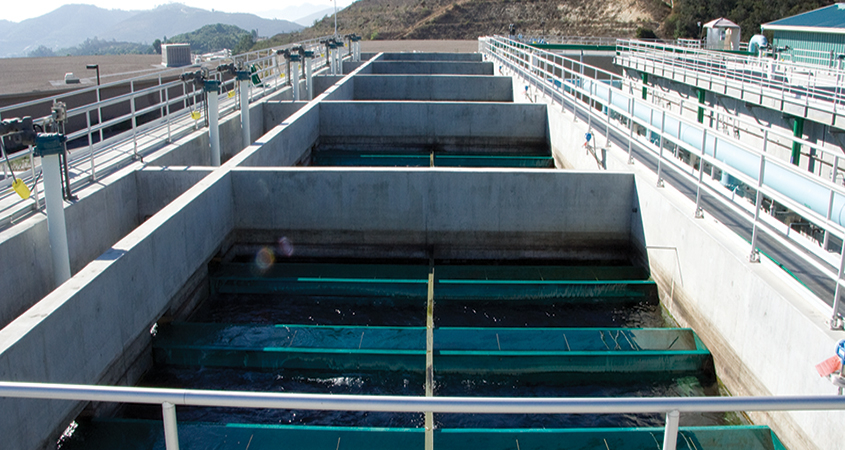What is a single turn vs multi-turn encoder? This article will introduce the difference in definition, advantages, applications, and multi-turn vs single turn encoders for the absolute encoder and rotary encoder.
Single turn vs multi-turn encoder in definition
Single-Turn Encoder:
A single-turn encoder is a type of rotary encoder that measures the angular position within a single revolution or turn. It provides position feedback for rotations up to 360 degrees, equivalent to one complete revolution. After completing one full revolution, the encoder starts counting from the initial position again.
Multi-Turn Encoder:
A multi-turn encoder is a type of rotary encoder capable of measuring multiple revolutions or turns. In addition to providing position feedback within each revolution, multi-turn encoders can track and measure the number of complete revolutions. They are capable of counting and tracking multiple complete rotations, typically up to several thousand revolutions.

Single-turn vs multi-turn encoder in advantages
Single-Turn Encoder:
Simplicity: Single-turn encoders are often simpler in design compared to multi-turn encoders. They typically have fewer components, making them easier to install and maintain.
Cost-Effectiveness: Due to their simpler design and lower complexity, single-turn encoders tend to be more cost-effective than multi-turn encoders. This makes them a preferred choice in applications where cost is a significant consideration.
High Resolution: Single-turn encoders can provide high-resolution position feedback within a single revolution. This high resolution allows for precise control and positioning in applications requiring fine adjustments.
Real-Time Feedback: Single-turn encoders offer real-time position feedback within each revolution. This immediate feedback is useful in applications where instantaneous position information is critical for accurate control or monitoring.
Multi-Turn Encoder:
Extended Range: The primary advantage of multi-turn encoders is their ability to measure and track multiple complete revolutions. This extended range makes them suitable for applications requiring position feedback over long distances or multiple rotations.
Absolute Positioning: Multi-turn encoders can provide absolute position information, not only within each revolution but also across multiple revolutions. This feature eliminates the need for homing or referencing, enabling immediate knowledge of the position even after power loss or system restart.
Increased Accuracy: Multi-turn encoders often offer higher accuracy over their entire range, including both the position within each revolution and the number of complete revolutions. This increased accuracy is beneficial in applications where precise position control or tracking is essential.
Versatility: Multi-turn encoders can be used in a wide range of applications that involve multiple rotations, such as elevators, cranes, wind turbines, and robotic arms. Their versatility makes them suitable for various industrial and automation applications.
Single turn vs multi-turn encoder in applications
The difference in applications between single-turn and multi-turn encoders is primarily determined by the range of motion and the complexity of the systems they are employed in:
Single-Turn Encoder:
Industrial Automation: Single-turn encoders find widespread use in industrial automation systems where precise position feedback within a single revolution is required. They are commonly utilized in conveyor systems, packaging machines, and robotic arms for accurate positioning and control.
Motion Control: Single-turn encoders are suitable for various motion control applications, including servo systems, stepper motors, and linear actuators. They ensure accurate positioning, speed control, and synchronization of motion in automated machinery and equipment.
Position Sensing: Single-turn encoders are used for position sensing in a wide range of devices and systems, including automotive applications (e.g., throttle position sensors), medical devices, and consumer electronics.
Multi-Turn Encoder:
Motion Systems with Multiple Rotations: Multi-turn encoders are essential in applications involving continuous rotation or multiple revolutions, such as rotary tables, indexing machines, and rotary presses. They provide accurate position feedback over long distances or multiple rotations.
Elevators and Cranes: Multi-turn encoders play a critical role in elevators, cranes, and hoists where they track the vertical movement of the car or load through multiple floors or levels. They ensure precise positioning and safety in vertical transportation systems.
Aviation and Aerospace: Multi-turn encoders are used in aviation and aerospace applications, such as aircraft control surfaces, antenna positioning systems, and satellite tracking. They provide accurate feedback for controlling the orientation and movement of aerospace vehicles and components.
Single-turn vs multi-turn encoder inaccuracy
Single-Turn Encoder:
High Resolution: Single-turn encoders often provide high resolution within a single revolution, allowing for precise position feedback. The resolution is typically expressed in terms of the number of pulses per revolution (PPR).
Limited Range: Single-turn encoders are designed to measure angular positions within a single revolution (360 degrees). As a result, their accuracy is generally consistent within this limited range.
Multi-Turn Encoder:
Extended Range: Multi-turn encoders are capable of measuring multiple revolutions, providing position feedback over a much larger range of motion. However, the accuracy may degrade slightly with each additional revolution.
Absolute Positioning: Multi-turn encoders offer absolute position feedback, including the number of complete revolutions. This allows for accurate positioning even after power loss or system restart.
Higher Precision: Multi-turn encoders may offer higher precision over their entire range compared to single-turn encoders. However, achieving this precision requires careful calibration and compensation for factors such as mechanical wear and environmental conditions.
Absolute encoder single-turn vs multi-turn

Absolute single-turn encoder
An absolute single-turn encode is a type of rotary encoder that provides position feedback within a single revolution (360 degrees) and directly indicates the absolute position within that revolution without the need for homing or referencing.
Position Feedback: It offers absolute position information for every position within a single revolution, allowing for precise angular position measurement without ambiguity.
Application: Absolute single-turn encoders are commonly used in applications where a full revolution or less of rotation is required, such as motor feedback, robotics, and industrial automation systems.
Initialization: Since they provide absolute position information within a single revolution, absolute single-turn encoders do not require initialization or homing procedures upon startup.
Absolute Multi-Turn Encoder:
Definition: An absolute multi-turn encoder is a type of rotary encoder capable of providing position feedback across multiple complete revolutions, in addition to the position within each revolution.
Position Feedback: In addition to providing absolute position information within a single revolution, multi-turn encoders track and indicate the number of complete revolutions, offering position feedback over an extended range of rotations.
Extended Range: Multi-turn encoders are suitable for applications requiring position feedback over several complete revolutions, such as in elevators, cranes, wind turbines, and robotic arms with long-range motion.
Initialization: Unlike single-turn encoders, multi-turn encoders require initialization or homing procedures to establish the absolute position reference point, especially after power loss or system restart.
Rotary encoder single-turn vs multi-turn
Single-turn rotary encoder:
Single-turn rotary encoders measure the rotational position within a single revolution or turn of the shaft.
They typically have a resolution specified in counts per revolution (CPR), indicating the number of distinct positions or “counts” that can be detected within one full rotation.
Single-turn encoders are suitable for applications where the shaft’s rotation does not exceed one complete revolution, such as control knobs on electronic devices, where a user typically makes small adjustments.
Multi-turn rotary encoder:
Multi-turn rotary encoders can measure the rotational position across multiple revolutions or turns of the shaft.
They have additional circuitry that enables them to track the number of revolutions made by the shaft beyond a single turn.
Multi-turn encoders often have a combined resolution, specifying both the counts per revolution (CPR) and the number of turns they can measure (e.g., 2048 CPR over 4096 turns).
These types of encoders are used in applications where the shaft may undergo multiple complete rotations, such as in industrial machinery, motor control systems, or robotic joints that need to keep track of absolute position accurately.






